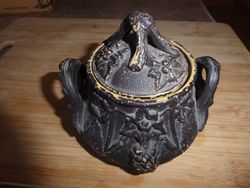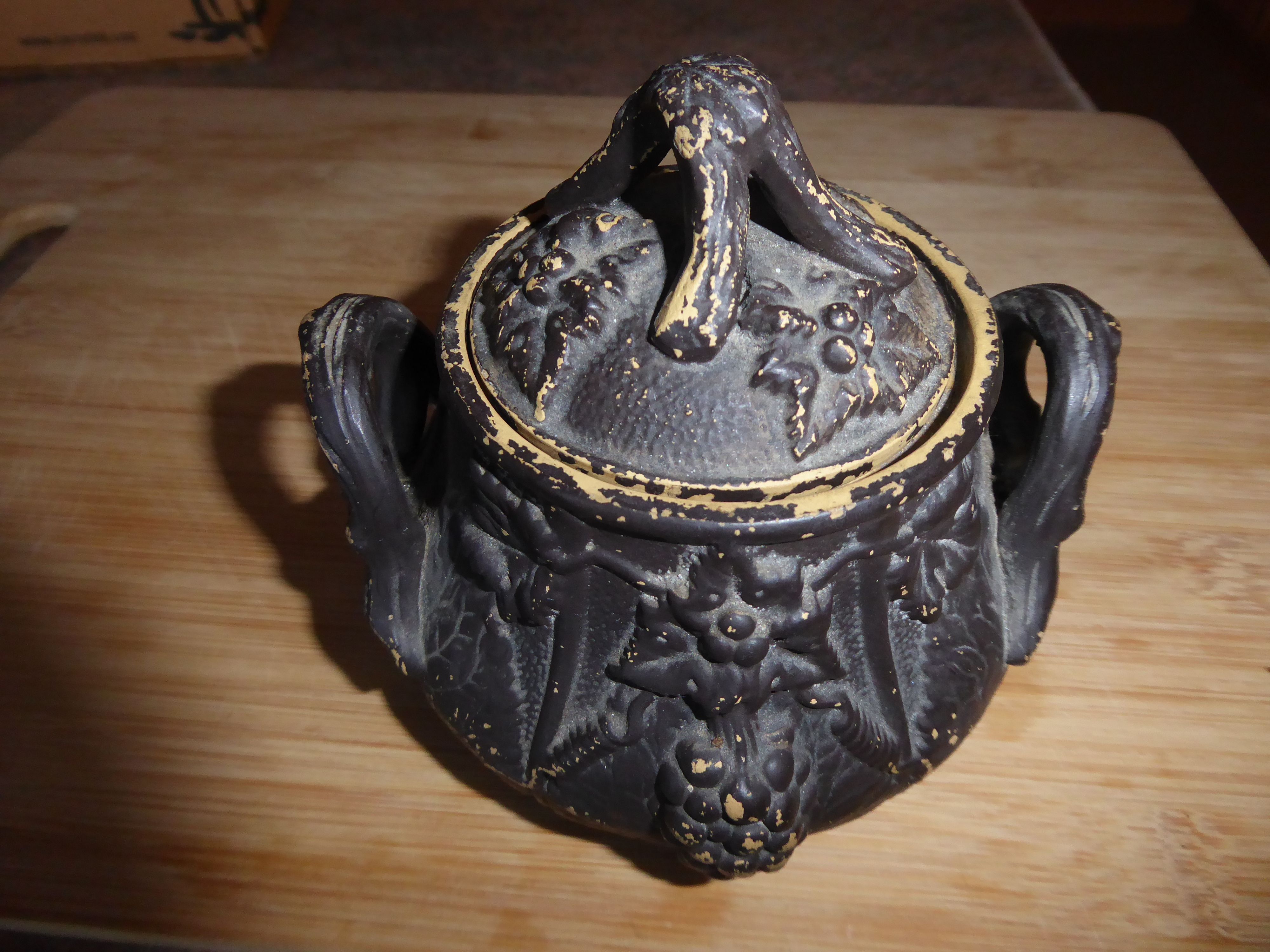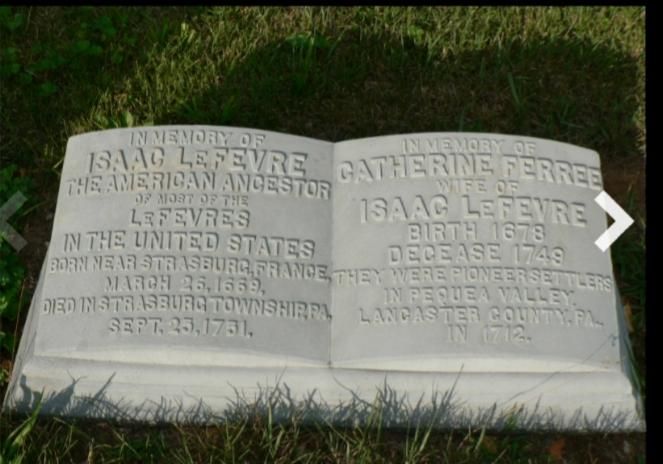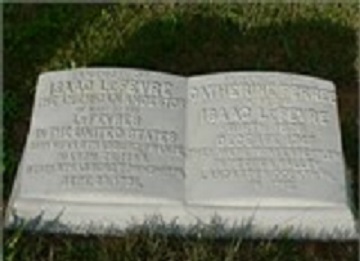As one becomes more deeply involved in his family's genealogy, the cold records can become living guideposts to be assembled into a contemporary concept of who those earlier people really were. Inasmuch as the LeFevre family in France were killed because of their Protestant Christian beliefs, that faith of our early LeFevres must have been very real, bringing forth many new facets to their lives. .
One should stop to reaIize what 16 year old Isaac LeFevre experienced in the blood bath he saw with has own eyes when his parents and brothers and sisters were slaughtered in 1685 in their home by the soldiers from the Roman Catholic state. His religious convictions must have registered heavily enough upon him so that he gathered up his family Bible. He took it with him as a momento or symbol of his beloved family as he hastily fled his native and familiar country to be traded for a foreign land. That was the Bible printed in 1608 in the French language in Calvin's Geneva. Just possessing such a Bible could bring instant death in France at that time.
That he was finally taken in as an orphan by the Daniel Ferree family, also Huguenots and also fleeing their native land leaving behind all their own prized possessions, is a matter of historical record. We don't know exactly where they met, but it is believed to have been near Strasbourg. Isaac's family were most likely very modest, probably workers in agriculture and vine growers and dressers. That's what the English noted on Isaac's listing for instruments to be provided by England's Queen Anne for her first boat load of new settlers for her new country. He was listed as a vine dresser.
The Daniel Ferree family (Fiere, Fire, etc.) were more likely from a much wealthier background, for Daniel was described as a wealthy silk manufacturer. He and his family had come under the heel of the French government because he was a professing Huguenot, a despised Protestant in that Roman Catholic comitted country. Instead of merely killing them as the soldiers had done to the LeFevres, it is believed they dragooned the Ferrees, sending a large band of perhaps 20 soldiers to live in their home. Usually under such circumstances the homes were upset, furniture broken, women desecrated, food taken or destroyed -- all in an effort to force the Huguenots to give up their Protestant religion and return to the Roman Catholic church. The Ferrees chose not to obey the soldiers. Instead they departed under cover of night, leaving all their possessions behind, and fleeing for their lives to depart their native country. That near part of Germany at that time was under the control of Lutheran Protestants, having been sold to them by Mad Ludwig to try to pay for the exorbitant castles he built for himself. .
So together, the Ferrees and Isaac LeFevre fled to the small town of Steinweiler in the mayoralty of Bittingham very likely about 1686, or within a year or so of fleeing their homes in France. This town was on the west side of the Rhine River, southwest of Mannheim and Heidelberg yet northeast of Karlsruhe. To help set the dates, Daniel Ferree was born in France circa 1650, and died in Germany circa 1708 before his family left for America. Circa 1669 he married Maria Warembauer born in France 1653, and died in Pennsylvania 1716. .
Among the Ferree family keepsakes is a church letter giving permission for them to leave for America. It was written on behalf of the pastor and elders of the Reformed Walloon Church of Pelican in the Palatinate of Germany. It was dated 5/10/1708 and granted permission for Daniel Ferree (son) and wife Anne Marie Leininger and their family to leave with their church's blessings. Records for the childrens' baptisms were included. Andrew Ferree was baptised in the Steinweiler Church 9/28/1701, sponsors being Andrew Leininger and wife Margaret. John Ferree was baptised 2/8/1703 in the church at Rhorbac with sponsors Abraham Ptillian and Judith Miller, both of Steinweiller. Though no such record for Isaac LeFevre, wife Catherine Ferree and son Abraham is known to exist, it would seem logical to believe they, too, had a similar church letter. They were so closely related, and were surely together members of the same Protestant Reformed Church there.
The term Walloon in the Reformed Church in Germany referred largely to French people who had been heavily influenced by the Germans, especially in the so called low countries of Flanders, Luxembourg and Belgium. The language and custom might have been Germanic. It is known that the New York LeFevres were Walloons. They had helped settle New Paltz, New York with Louis DuBois, known as Louis the Walloon who established the Huguenot related Walloon Reformed Church in New Paltz. And the Daniel Ferree and Isaac LeFevre families came under that influence both in Germany and again in New York. However, it is this writer's conviction Isaac LeFevre wasn't thoroughly a Walloon. He preferred the French language, as evidenced by the fact his notes in the LeFevre Bible were in French, as well the notations of the birth of each of his children in French, even long after he had arrived in America. The French Huguenot influence seemed to have been dominant.
As one becomes more deeply involved in his family's genealogy, the cold records can become living guideposts to be assembled into a contemporary concept of who those earlier people really were. Inasmuch as the LeFevre family in France were killed because of their Protestant Christian beliefs, that faith of our early LeFevres must have been very real, bringing forth many new facets to their lives. .
One should stop to reaIize what 16 year old Isaac LeFevre experienced in the blood bath he saw with has own eyes when his parents and brothers and sisters were slaughtered in 1685 in their home by the soldiers from the Roman Catholic state. His religious convictions must have registered heavily enough upon him so that he gathered up his family Bible. He took it with him as a momento or symbol of his beloved family as he hastily fled his native and familiar country to be traded for a foreign land. That was the Bible printed in 1608 in the French language in Calvin's Geneva. Just possessing such a Bible could bring instant death in France at that time.
That he was finally taken in as an orphan by the Daniel Ferree family, also Huguenots and also fleeing their native land leaving behind all their own prized possessions, is a matter of historical record. We don't know exactly where they met, but it is believed to have been near Strasbourg. Isaac's family were most likely very modest, probably workers in agriculture and vine growers and dressers. That's what the English noted on Isaac's listing for instruments to be provided by England's Queen Anne for her first boat load of new settlers for her new country. He was listed as a vine dresser.
The Daniel Ferree family (Fiere, Fire, etc.) were more likely from a much wealthier background, for Daniel was described as a wealthy silk manufacturer. He and his family had come under the heel of the French government because he was a professing Huguenot, a despised Protestant in that Roman Catholic comitted country. Instead of merely killing them as the soldiers had done to the LeFevres, it is believed they dragooned the Ferrees, sending a large band of perhaps 20 soldiers to live in their home. Usually under such circumstances the homes were upset, furniture broken, women desecrated, food taken or destroyed -- all in an effort to force the Huguenots to give up their Protestant religion and return to the Roman Catholic church. The Ferrees chose not to obey the soldiers. Instead they departed under cover of night, leaving all their possessions behind, and fleeing for their lives to depart their native country. That near part of Germany at that time was under the control of Lutheran Protestants, having been sold to them by Mad Ludwig to try to pay for the exorbitant castles he built for himself. .
So together, the Ferrees and Isaac LeFevre fled to the small town of Steinweiler in the mayoralty of Bittingham very likely about 1686, or within a year or so of fleeing their homes in France. This town was on the west side of the Rhine River, southwest of Mannheim and Heidelberg yet northeast of Karlsruhe. To help set the dates, Daniel Ferree was born in France circa 1650, and died in Germany circa 1708 before his family left for America. Circa 1669 he married Maria Warembauer born in France 1653, and died in Pennsylvania 1716. .
Among the Ferree family keepsakes is a church letter giving permission for them to leave for America. It was written on behalf of the pastor and elders of the Reformed Walloon Church of Pelican in the Palatinate of Germany. It was dated 5/10/1708 and granted permission for Daniel Ferree (son) and wife Anne Marie Leininger and their family to leave with their church's blessings. Records for the childrens' baptisms were included. Andrew Ferree was baptised in the Steinweiler Church 9/28/1701, sponsors being Andrew Leininger and wife Margaret. John Ferree was baptised 2/8/1703 in the church at Rhorbac with sponsors Abraham Ptillian and Judith Miller, both of Steinweiller. Though no such record for Isaac LeFevre, wife Catherine Ferree and son Abraham is known to exist, it would seem logical to believe they, too, had a similar church letter. They were so closely related, and were surely together members of the same Protestant Reformed Church there.
The term Walloon in the Reformed Church in Germany referred largely to French people who had been heavily influenced by the Germans, especially in the so called low countries of Flanders, Luxembourg and Belgium. The language and custom might have been Germanic. It is known that the New York LeFevres were Walloons. They had helped settle New Paltz, New York with Louis DuBois, known as Louis the Walloon who established the Huguenot related Walloon Reformed Church in New Paltz. And the Daniel Ferree and Isaac LeFevre families came under that influence both in Germany and again in New York. However, it is this writer's conviction Isaac LeFevre wasn't thoroughly a Walloon. He preferred the French language, as evidenced by the fact his notes in the LeFevre Bible were in French, as well the notations of the birth of each of his children in French, even long after he had arrived in America. The French Huguenot influence seemed to have been dominant.



















